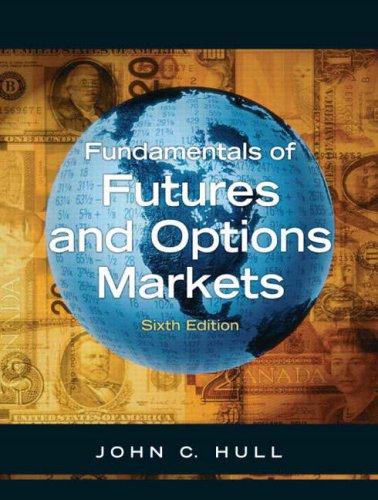Answered step by step
Verified Expert Solution
Question
1 Approved Answer
2 . One of the major concerns for middle - aged folks is when to retire and start receiving social security payments. The Social Security
One of the major concerns for middleaged folks is when to retire and start receiving social security payments. The Social Security Administration SSA gives you the following guidelines:
a Retire at age SSA payments are reduced by percent, and you can only earn less than $year before further reduction of your payments.
b Retire at full retirement age You can also continue to work and earn as much as you want with no penalties. Typical yearly SSA payments for engineers are $ to $year
c Retire at and SSA payments will increase by percent.
The decision is obviously dependent on the life expectancy of the person and the expected future interest inflation rate. Each participant should use a different inflation rate i or consumer purchasing index or CPI to advise whether to retire at or based on the persons life expectancy. Indicate the age where there is a breakeven between any two of the three choices. You can choose percent, low or hyperinflation i rates, or halfpercent increments not in the tables, depending on your outlook for the economy into the future. Hint: treat the SSA problems posed here as independent items from your income. SSA is an annuity where the decision when to take it rests on the merits of the three options above, nothing to do with your salary.
Required discussion post centers on three scenarios for social security administration SSA retirement benefits. These benefits increase yearly by the amount of inflation i:
Retire at and receive full SSA retirement benefits.
Retire at and receive reduced SSA retirement benefits with limits on how much you can earn
Retire at and receive increased SSA retirement benefits
Note that the average retirement benefits for an engineering manager working years is around $year and current interest rate increase per year is less than However, the decision is immaterial to the benefit amount, so you can actually use $ as your basis in making the decision.
The goal of Post is to determine which scenario is better, assuming that each potential retiree has two constraints to think about:
How long are they expected to live average age for Males is and females is depending on their current health before retiring?
What is the expected rate of inflation?
I attached an Excel sheet based starting scenario to help in post It assumes no inflation rate for ages and but shows how to perform analysis for age and show three crossover points for interest they are at years of age, at years and at years. Use it as guide to change the analysis for ages and You can update it either for PV or FV not both
To add inflation rate i to the decision, you can convert each year benefit by using either Present Value PV or Future Value FV to each year of the benefit on a yearly basis then add the years to make the crossover comparison in a third Excel column, using either the ROI tables or the formula
FV PV in The higher the inflation rate the larger older crossover age is since $$ in the future are worth less in todays dollars. I find it easier to use FV which shows expanding up curves. PV shows leveling off curves.
In the given Excel example, Please note that PresentFuture Values for ages column D and Column M are not calculated using the inflation rate like the PresentFuture Value is for age Column H
If you use PV then you have to make sure to bring the first and subsequent years for ages and to PV If you use FV then you do not have to bring all years to PV and just plug in the FV formula to each year then add up the benefits Please have the same n for all three scenarios, starting with n for age and n for age and n for yeas The crossovers will be the same for using either PV or FV as described.
If you are really ambitious, then you can use PA or FA from the ROI table. This way you can eliminate the third addition column for each year and compare the three scenarios directly
I am using as average life expectency interest rate and $ as the starting salary.
Step by Step Solution
There are 3 Steps involved in it
Step: 1

Get Instant Access to Expert-Tailored Solutions
See step-by-step solutions with expert insights and AI powered tools for academic success
Step: 2

Step: 3

Ace Your Homework with AI
Get the answers you need in no time with our AI-driven, step-by-step assistance
Get Started


